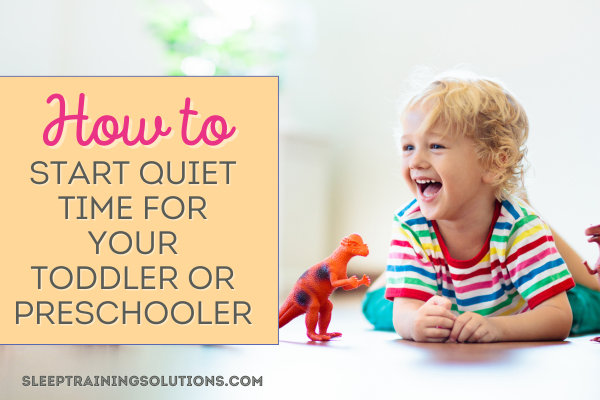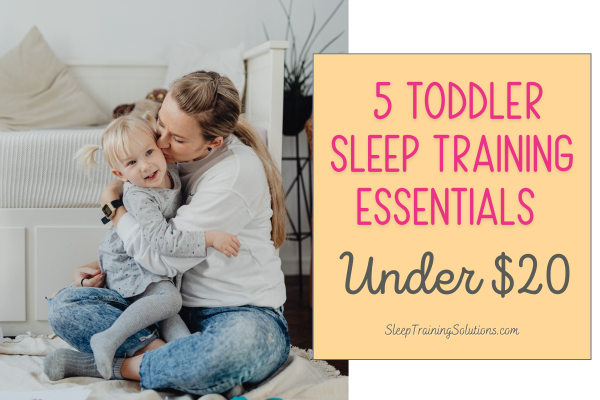3 Steps to Successfully Implementing Quiet Time
How to implement quiet time after dropping the nap!
Wondering how you transition from a nice, long afternoon nap for your preschooler to them being awake allll day? It’s time to implement quiet time! When you successfully implement quiet time, your child will have that time necessary to be less stimulated and “recharge” for the rest of the day, practice independent play AND you don’t have to lose that precious time in the early afternoon to get things done (or just relax yourself)! But in order to implement quiet time successfully, you need to follow three steps.
Implementing Quiet Time Tip #1 - Talk about expectations
As with anything you’re introducing to your child, it is paramount to explain expectations and exactly how it will work.
You’ll want to explain WHY this is happening - “You’re such a big boy/girl now that you don’t have to nap anymore! Yay! Now you get to have quiet playtime!” It’s always helpful to put a positive spin on changes so your child is more likely to cooperate!
And then explain exactly WHEN and HOW quiet time will work:
“Everyday, right after lunch, instead of having a nap, we’ll go into your room and get a special quiet time bin down for you so you can have quiet playtime! You get to play on your own in your room like a big boy/girl! We’ll set the timer for __ minutes and when the timer goes off, you’ll put everything back in the bin and then we’ll ____ (whatever activity you typically do after naptime in the afternoon).”
It’s important that your child understands that this is solo play time.
Implementing Quiet Time Tip #2 - Get a visual timer
How many times have you said, “Ok, get ready to go! We’re leaving in 5 minutes!”
And then you get sucked into a work email, have to reply to a text, or want to quickly load the dishwasher…and then 20 minutes later, you’re out the door.
Because we, as parents, will say we’ll do something in 5 minutes, but it rarely (if ever) is really 5 minutes, we aren’t helping kids get a true sense of time. The solution?
It’s SUPER helpful to have a timer that is a visual representation of time.
I love this timer because you set it for 15 minutes (anything up to an hour) and the red slice is a of the circle and then as the minutes tick by, the red slice gets smaller and smaller so your child can actually see how much time is left.
While not required, this timer makes implementing quiet time so much easier because your little one won’t have to come out and ask “how much longer” - they’ll be able to see it on the timer.
Depending on how well your child is currently able to play independently, you can start the timer at 15 minutes and work up to 45-60 minutes if your child is able.
The first time you show your child the timer, set it for one minute and then sing a favorite song together (or start building a block tower, etc.). The timer will ding after one minute and he or she will get a sense of how long one minute is (one full song, a block tower 5 blocks high, etc.)
Then set it for five minutes and see what your child can do in that timeframe and work up to 15 minutes so your child can get a sense for how long independent play will be.
It’ll be a learning process in the beginning, but after a few days, your child should understand how the timer works.
Be sure to put it in a place where your child can’t reach it (and change the time!)…
Implementing Quiet Time Tip #3 - Quiet Time Bins
This is where the magic happens, because if your child is bored playing independently, he’s not going to stay in his room and cooperate!
The big picture of how quiet time bins work: you’ll introduce bins of activities that your child plays with ONLY during quiet time, the activities in each bin will be ones that your child doesn’t have duplicates of to play anytime (ie they’re quiet time-specific toys) and you’ll rotate each bin so each bin stays exciting and fresh.
First, get 4-7 bins - like these 12 qt plastic bins, cotton rope or extra large cloth bins with handles - that you can easily store out of sight/reach. The more bins you get, the longer they’ll “last”. When you have 7 bins, your child is playing with each 4 times a month…with 4 bins, your is playing with each 7 times a month. But it depends on your budget and how much space you have to store these bins. Remember that they’ll need to be put away after each quiet time so your child doesn’t have access to them outside of quiet time - we want to keep them fun and exciting each time your child gets to play with them!
You’ll label each bin A, B, C, D, etc and fill each with 4-6 activity items. To make it easy for you, line them up on your child’s closet shelf in order (or wherever you plan on storing them so your child can’t access them) and take Bin A out on Day 1, and when quiet time is over, slide them down and place Bin A next to Bin D (or your last bin). That way you alway take from one side and will keep rotating in order!
Here’s some inspiration of what to put in each bin - all available on Amazon with 4.5-5 star reviews.
Want to see all these items on one page? 👇
✅ Get the list of top-rated toys, puzzles and books for quiet time!
Quiet time activity #1: Puzzles
Letters, colors and shapes puzzle set
Quiet time activity #2: Block Sets
Pattern block set with blocks and cards
Shape stacking (this one was a personal favorite of my kids)
Magnetic block tiles and magnetic cars (the other personal favorite of my boys!)
Alphabet, number, picture stacking natural wood blocks
Quiet time activity #3: Sorting
Dinosaur color matching and sorting classification
Fruit and vegetable sorting garden
Quiet time activity #4: Busy Boards
Quiet time activity #5: Coloring/Doodling
Mess-free activity pad and markers - Nickelodeon set
Mess-free Disney characters pad and markers
Mess-free vehicles water-reveal pad
Quiet time activity #6: Books
Cars, Trucks and Diggers Peek-a-Boo Book
Around the Farm Animal Sounds Book
Introduction to Counting Sound Book
Interactive Read-Along Sound Book - Spiderman
Quiet time activity #7: Miscellaneous
Word, letter and number learning toy
* Always check to make sure the activities you choose are age-appropriate for your child and that your child’s bedroom is childproofed before letting your child play independently in the bedroom.
Some last tips on implementing quiet time:
If you have carpeting in your child’s room, provide a flat surface to build, draw or play on. This can be a cookie sheet or the top of a plastic bin, or, if you know your child will be spending a lot of time creating in his or her room, consider a play table.
Keep activities with pieces (and no box or container) in these handy color-coded, zippered pouches. You can label with a picture so it’s more likely the right pieces will go back into the right pouch!
For the first week (or however many bins you have), ask your child what he played with and which activity was his favorite. You’ll get a sense of the most popular items to buy similar items when your bins need a refresh. If you buy a large quantity of blocks, and those are one of the favorites, you can split them up into two bins so your child has more exposure to them. (This works best when there’s 2-3 days in between).
Every few weeks, just do a check of the bins that the pieces are still together, if nothing’s broken, etc. You may even want to occasionally rotate which activities you put together in each bin to get as much life out of the activities as possible!
What I LOVE about implementing quiet time (besides the fact that it helps provide a less stimulated environment for your child, helps them practice independent play, and gives you some time in the afternoon to recharge as well!) is that you can provide more educational activities and teach your child about sorting, patterns, letter, number, etc. So many learning opportunities!
Quiet time activities for toddlers and preschoolers
Related Posts:
Sleep Training Solutions is a participant in the Amazon Services LLC Associates Program, an affiliate advertising program designed to provide a means for sites to earn advertising fees by advertising and linking to Amazon.com and affiliated websites.
This post is for informational purposes only and may not be the best fit for you, your child and/or your personal situation. It shall not be construed as medical advice. The information and education provided here is not intended or implied to supplement or replace professional medical treatment, advice, and/or diagnosis. Always check with your child’s physician or medical professional before trying or implementing any information read here.






